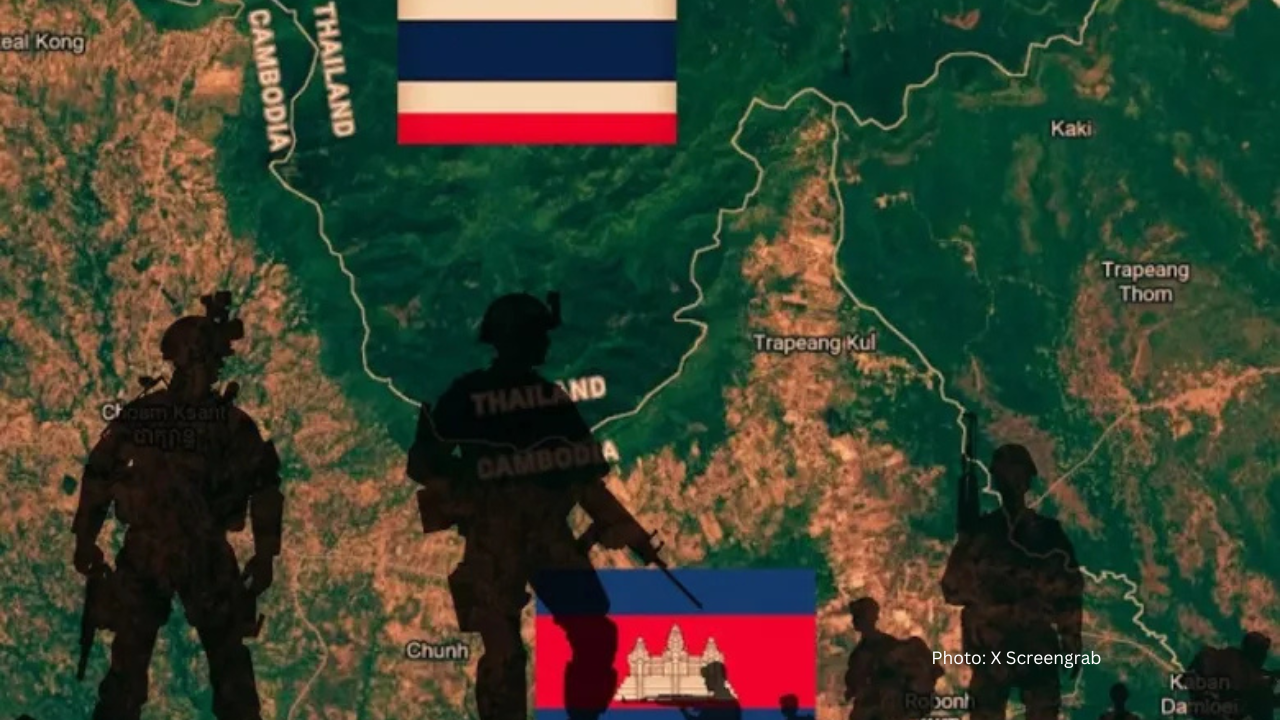Thailand and Cambodia: Southeast Asia’s Fierce Frontier Dispute
Depanjali Roy | 30 July 2025
Thailand and Cambodia, they are neighbors and situated in Southeast Asia, specifically in the Indochina region. Both of the countries have similarities in their history, culture and cuisine because of their deep connection to Khmer culture. Although their political connections were not always healthy. As they have a similar belief system, they are always protective about their temples, especially in the borders. Temples of Preah Vihear and Ta Muen Thom were two main temples in the border of both countries and often tension arises surrounding these temples.
Conflict in the border escalated on July 15 2008, when the 50 Thai soldiers came close to the area of Temples of Preah Vihear. According to the Thai government the demarcation of the temple was not clear in 1962, ICJ verdict. Actually, Cambodia was under French rule before WWII. After the war, both of the countries appealed to the International Court of Justice (ICJ) and Temples of Preah Vihear came under Cambodia according to a 1907 French map. However, Cambodia has only the temple but the surrounding of the temples are not distributed. And that's what Thailand claims.
If we see the recent activities on the border of Thailand and Cambodia, the tension rose on May 28, 2025 when a 10 minutes skirmish continued on the border between the two forces, and one Cambodian soldier was killed. After that series of incidents happened in June, 2025 when military officials of two sides sat for bi-lateral talks. Although it went into vain and both of the countries closed their borders, Cambodia also banned imports of Thai fruits and soap operas. It became controversial when Thai Prime Minister Paetongtarn Shinawatra got suspended from her position as Hun Sen, Cambodian President of the Senate, leaked their conversation over a phone call. On the call the Shinawatra addressed Hun Sen as “uncle” and herself as his “niece”. Moreover, she also mentioned the commander of the Second Army Region, BoonsinPadklang, as the "a man of the opponents” and “not beneficial for the country” and he wanted to fight than make peace. Hun Sen shared this recording with twenty other Cambodian officials and later on facebook as proof. Paetongtarn Shinawatra later confirmed the authenticity of the recording and tried to defend herself by saying it was “of the record approach” and private conversion with Hun Sen. This is very obvious to say that Cambodian President of the Senate, Hun Sen took full advantage of the situation and played dirty to gain popularity, rather than solidify diplomatic connections with Thailand with a peaceful approach.
In the course of all controversy, she showed her frustration by saying it was a breach of diplomatic trust by Cambodia. On July 1, 2025 she was suspended from her position and PhumthamWechayachai appointed as acting prime minister of Thailand. As the border security got strict, on July 13, three Thai soldiers were injured by landmines. Later it was reported that those landmines were not from WWII, but “new and ready to deploy conditions” and planted by Cambodia in the borders. Although Cambodia denied all the allegations and accused Thailand for spreading misinformation. The situation got heated up when on July 23, five Thai soldiers were again severely injured by landmine. After this incident the Thai government criticised Cambodia by saying its attack on sovereignty and against human rights, recalled its ambassador and closed all the checkpoints for Cambodia. From 24-27 July, military conflict took place on the border and as a result civilians and soldiers were killed from both sides. Civilians got displaced because of this sudden conflict.
Both the countries of Southeast Asia felt they needed a solution, and Malaysia came forward to help as a mediator. The negotiation process started on July 28, 2025 where both of the countries agreed on unconditional ceasefire. The meeting was followed by border committee meetings with defense officials of Thailand and Cambodia. The meeting was also attended by the officials of Malaysia, the US, and China as observers. Now two of the countries can only hope that their conflict can be solved with the intervention of the ASEAN Summit in the month of August. Here Malaysia played a crucial role in the reconstruction process between Thailand and Cambodia. This year ASEAN Chairmanship was held by Malaysia and they took the initiative to attend the meeting between these countries to strengthen the unity of this region. Malaysia understood that the South-east region needs to be together, as the tariff from the USA can pressure its people to lose their livelihood by going through a declining economy. However, it's better late than never to strategize and work according to the changing scenarios.
In the end, it is commendable how Southeast Asian countries and its organization ASEAN will come forward to resolve the border conflict between Thailand and Cambodia. It took time but all of the countries understood the importance of unity in this crucial point when strengthening the economy of this region should be the main focus. This incident is an example of prioritizing long-term stability over ignoring petty fights.
Depanjali Roy is a Chief of Staff at Centre for Governance Studies (CGS)
Disclaimer: Views in this article are author’s own and do not necessarily reflect CGS policy
